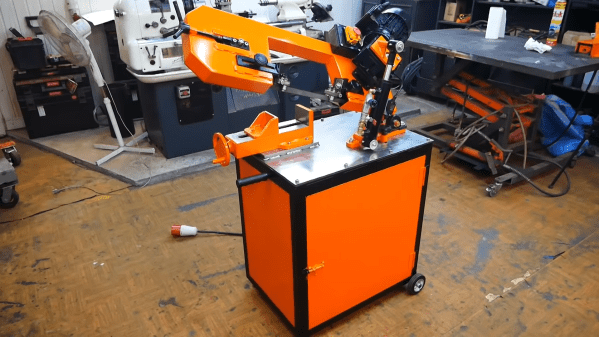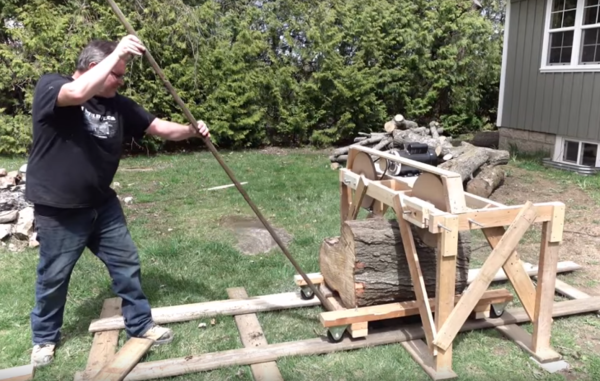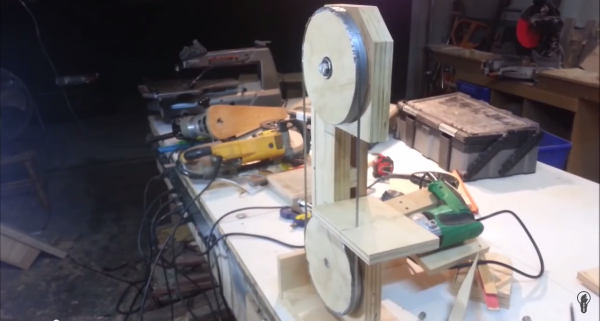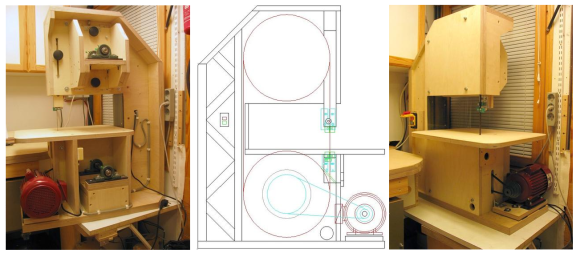Handheld band saws exist, and can be highly useful tools. However, they lack some of the finesse and precision of the more traditional upright units, particularly for with smaller workpieces. [Honus] set about rectifying this, building a stand for their DeWalt handheld bandsaw out of scrap lumber.
The stand consists of some hefty wooden beams sawn to length and screwed together to make a support for the bandsaw. A nice 1/4″ thick aluminium plate is installed as a baseplate for cutting.
Then, the handheld bandsaw itself is attached to the rig, held in place with a bolt and a large zip tie. The zip tie is fastened around the trigger, holding it down all the time. Then, a switched powerboard is used to turn the saw on and off as needed. Importantly, simply cutting a ziptie and removing a bolt is enough to restore the handheld saw to its original purpose.
It’s a tidy build and one that makes an existing tool more useful for minimal extra cost. We’ve actually seen bandsaws built from scratch, too. If you’re cooking up your own great hacks in the home shop, be sure to let us know!


















